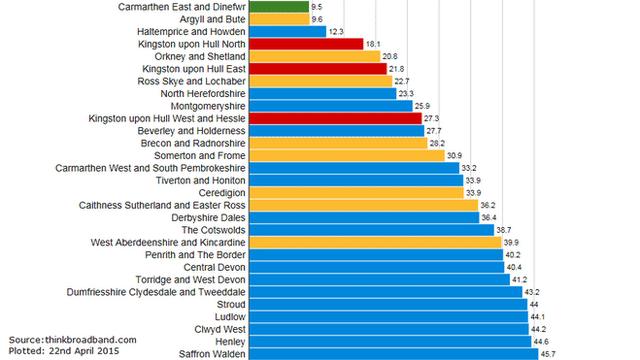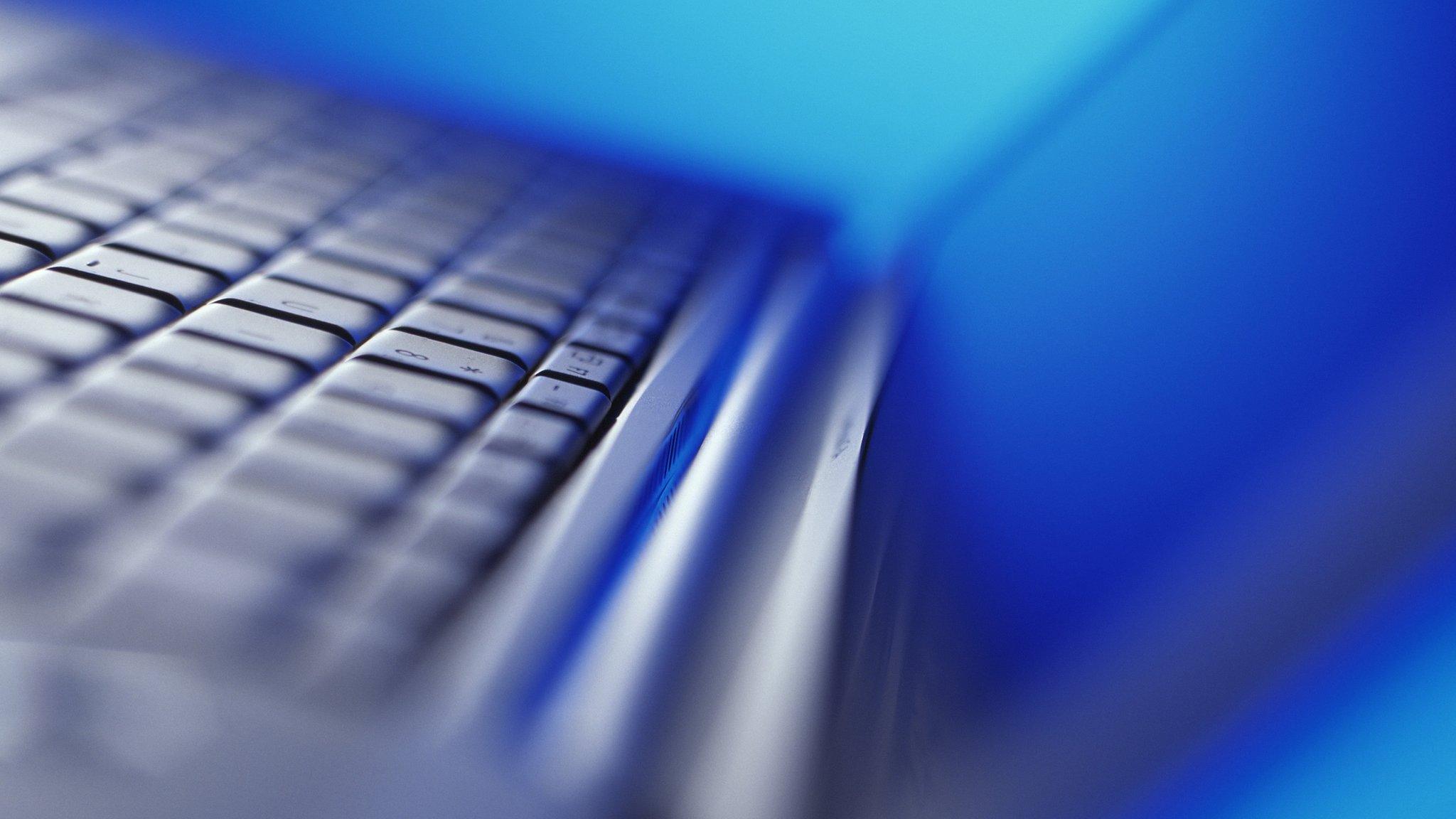Map reveals which constituencies have fastest broadband
- Published

Urban and rural areas should have high-speed broadband coverage, all the parties agree
Labour-controlled constituencies are more likely to have faster broadband, new data suggests.
Of the top 30 constituencies - areas where 90% or more of premises have speeds of 30Mbps (megabits per second) or higher - 16 are Labour-controlled.
But 17 of the bottom 30 constituencies - those with only half or fewer premises having superfast broadband - are run by Conservative councils.
The map was drawn up by broadband news website ThinkBroadband, external.

The chart shows the top 30 constituencies and the percentage of properties that have broadband speeds of 30Mbps or above
Liberal Democrat- controlled constituencies had a similar number at both the top and bottom of the league - five in the top 30 and eight in the bottom 30.
"It is interesting that so many Labour seats are towards the top end of the chart," said founder of ThinkBroadband Andrew Ferguson.
"A lot of this is because Labour seats tend to be in urban areas while Conservative ones tend to control more rural seats."
The map looks at coverage across the UK's 650 constituencies - which, on average, have about 50,000 premises - homes and businesses.
The map throws up huge contrasts between areas that are close to each other.
For example, in Wales the constituency of Carmarthen West has 33% of premises with super-fast broadband, compared with just 9.5% in neighbouring Carmarthen East.
Many of the constituencies in Hull show fairly low levels of superfast broadband, even though much of the broadband rollout is controlled by Kingston Communications which is offering homes extremely fast fibre-to-the-home technology.

There are more Conservative constituencies at the bottom of the league table
"Kingston Communications has done a lot of fibre-to-the-home broadband but that technology is slower to roll out and so the total coverage is less," said Mr Ferguson.
It is important to note that the data does not allow anyone to draw conclusions about whether one political party is better than another when it comes to broadband policies, he said.
"The UK telecoms market is amazingly diverse and it is impossible to credit any one single political party for the success or otherwise with respect to what services are available as the current situation is the result of some 30 years of regulation," he told the BBC.
But local MPs can exert influence, he added.
"What individual politicians can do and should ensure is that those in their constituency are not placed at a significant disadvantage, this could be through ensuring a local authority project covers an area through to ensuring that alternate operators have minimal hurdles to overcome to provide a much-needed service."
Digital manifestos
All the main parties have included broadband pledges in their manifestos.
Labour have promised affordable, high-speed broadband across the country by 2020 while the Conservatives pledged to continue with their plans to provide 95% of the UK with superfast broadband by 2017.
The Liberal Democrat approach reflects the broadband delivery programme currently in motion and which it helped to create.
It can be difficult to extrapolate what will happen based on election pledges, said Mr Ferguson.
"They all make promises but there is little detail on how they will do it.
"Whoever gets into power, nothing much will change in the plans up to 2017. And after that, broadly they all want the same thing - to get to almost universal access eventually," he said.
- Published20 April 2015

- Published21 April 2015

- Published22 April 2015
